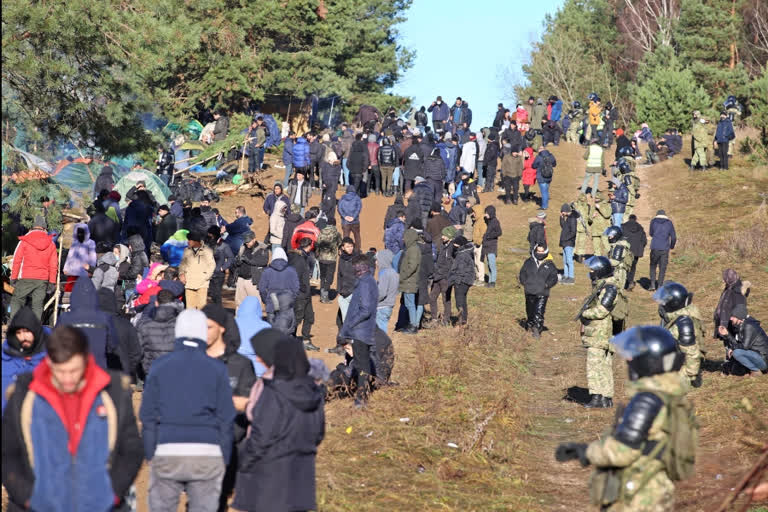New York: Thousands of migrants and refugees have flocked to Belarus' border with Poland, hoping to get to Western Europe, Many of them are now stranded at the frontier, setting up makeshift camps as Polish security forces watch them from behind a razor-wire fence and try to prevent them from entering the country. The European Union has accused the president of Belarus, Alexander Lukashenko, of aiding illegal border crossings in retaliation for EU sanctions. Lukashenko denies encouraging migration to Europe.
A look at what led to the standoff:
What is behind the crisis?
Belarus was rocked by months of massive protests following the August 2020 election that gave authoritarian President Alexander Lukashenko a sixth term in office. The opposition and the West rejected the result as a sham.
Belarusian authorities responded to the demonstrations with a fierce crackdown that saw more than 35,000 people arrested and thousands beaten by police.
The European Union and the U.S. reacted by imposing sanctions on Lukashenko's government.
Those restrictions were toughened after an incident in May when a passenger jet flying from Greece to Lithuania was diverted by Belarus to Minsk, where authorities arrested dissident journalist Raman Pratasevich. The EU called it air piracy and barred Belarusian carriers from its skies and cut imports of the country's top commodities, including petroleum products and potash, an ingredient in fertilizer.
A furious Lukashenko shot back by saying he would no longer abide by an agreement to stem illegal migration, arguing that the EU sanctions deprived his government of funds needed to contain flows of migrants. Planes carrying migrants from Iraq, Syria and other countries began arriving in Belarus, and they soon headed for the borders with Poland, Lithuania and Latvia.
Also read:Baltic countries impose sanctions against Belarus ahead of EU
Pavel Latushka, a member of the Belarusian opposition, charged that state-controlled tourist agencies were involved in offering visa support to migrants and helping them drive to the border.
The EU accused Lukashenko of using the migrants as pawns in a "hybrid attack" against the 27-nation bloc in retaliation for the sanctions. Lukashenko denies encouraging the flow of migrants and said the EU is violating migrants' rights by denying them safe passage.
What has been the response by EU countries?
During the summer, Lithuania introduced a state of emergency to deal with an influx of migrants and strengthen its border with Belarus. It set up tent camps to accommodate the growing number of migrants.
In previous months, small groups of asylum-seekers tried to sneak into Lithuania, Poland and Latvia at night, using forest paths away from populated areas. This week, much larger groups gathered openly at the Polish border, and some people used shovels and wire cutters to try to break through a razor-wire fence at Poland's border.
Authorities in Warsaw estimated the crowds at about 3,000-4,000 and said they prevented hundreds of people from entering the country. Poland deployed riot police and other forces to bolster the border guards. Eight deaths have been confirmed at the Belarus-Poland border, and temperatures have fallen below freezing at night.
The EU has made a strong show of solidarity with Poland, Lithuania and Latvia. EU officials are expected to discuss another round of sanctions against Belarus, and European Council President Charles Michel said for the first time that the bloc would consider the possibility of financing "physical infrastructure" such as barriers or fences on the border.
Also read:UN: Migrant deaths on sea routes to Europe more than double
